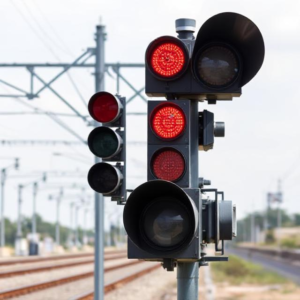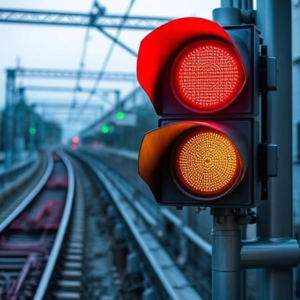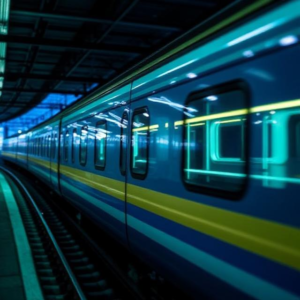Sure! Let’s break it down into simpler terms. Digital communication in rail signaling systems is all about how signals (messages) are sent and received between the different parts of the railway network to ensure safe and efficient train movement.
What is Rail Signaling?
Rail signaling is like the “traffic control system” for trains. It helps control train movement, ensuring they don’t crash into each other. It includes things like:
- Signals: Lights or displays that tell train drivers if they can go, slow down, or stop.
- Track Circuits: These are used to detect if a train is on a particular section of the track.
- Control Centers: Places where operators monitor the train movement and control the signals.

Traditional vs Digital Communication
- Traditional Communication: In older systems, the communication between train control centers and signals used to happen through analog methods like telephones or wired connections. These systems were slower and could be prone to errors.
- Digital Communication: This is the modern way of sending information using digital signals (0s and 1s). It’s faster, more reliable, and can carry more data.
How Digital Communication Works in Rail Signaling
- Data Transmission: Digital communication systems use networks like fiber optics, wireless networks, or GSM-R (a special mobile network for trains) to send information. For example, the control center sends a digital signal to a signal light on the track saying “Go” or “Stop.”
- Trackside Equipment: The signals that show “Stop” or “Go” to the driver are controlled digitally. The trackside devices (like signal lights, and switches) receive instructions via a digital network. This allows better accuracy in signaling and quicker responses.
- Train-Track Communication: Trains can also send information back to the control center using digital communication. This could include:
- Train location (where exactly the train is).
- Speed.
- Whether the train is facing any problems.
- Safety and Automation: Digital communication in rail signaling systems allows the automation of many tasks. For example, automatic train protection (ATP) systems can prevent accidents by automatically stopping a train if it runs a red signal.
- Improved Efficiency: With digital communication, rail operators can monitor the entire network in real-time, reducing delays and improving safety. It’s easier to reroute trains if there’s a problem or congestion.
- Integration with Other Systems: Digital communication also allows integration with other systems like:
- Passenger Information Systems: Telling passengers about train arrivals and departures.
- Weather and Environmental Sensors: Adjusting train movement in case of weather disturbances like fog or heavy rain.
Benefits of Digital Communication in Rail Signaling:
- Faster Response: Information is transferred quickly and reliably.
- Higher Safety: Fewer human errors because automation systems are in place.
- More Data: Digital systems can handle a lot of data, such as train speed, location, and track status, which leads to better decision-making.
- Reduced Maintenance: Digital systems are easier to maintain and upgrade.
Example: European Train Control System (ETCS)
An example of a digital signaling system is the ETCS, which is used in many parts of Europe. It allows:
- Continuous monitoring of train speed and location.
- Automatic stopping of trains if needed (for safety).
- Integration across countries, as trains can travel across borders with the same signaling system.
Conclusion
Digital communication in rail signaling makes the railway system smarter, faster, and safer. It ensures trains are properly controlled, accidents are prevented, and the overall experience for passengers is better.
In simple words, it’s like upgrading the old, slow communication system with a faster, more reliable digital system that helps trains “talk” to each other and to the control centers, making the whole train system safer and more efficient.
Keywords: Rail Signaling, Railway










